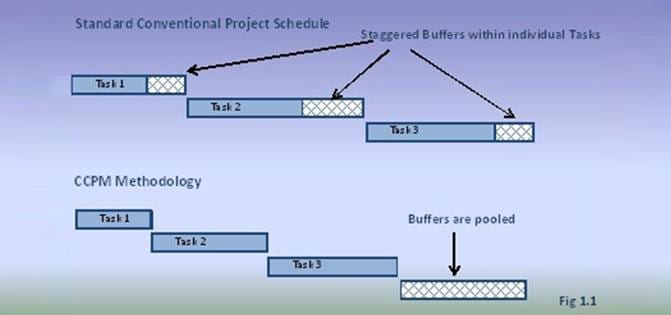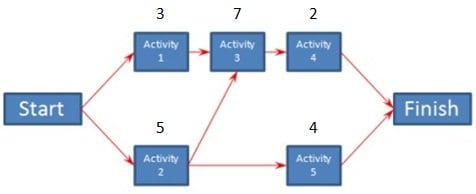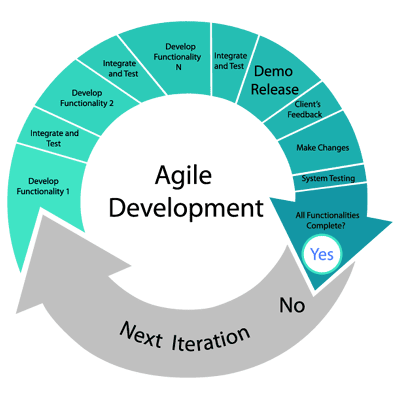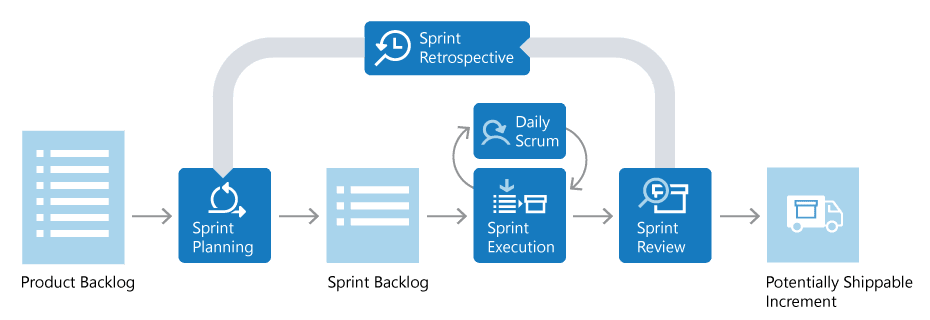If you’re new to the field of project management, you may be startled by the number of various, and often conflicting, project management methodologies. Why so many? Which are most popular? And what are project management methodologies in the first place? This brief overview highlights various historical and current methodologies.
First of all, project management methodologies are, according to the Project Management Institute, simply “systems of practices, techniques, procedures and rules.” Some of these are a set of guiding principles, and may encompass various methods for actual implementation. Other project management methodologies are “full stack” approaches, which lay out specific procedures. Each has its own set of specific priorities, such as aligning with company values or eliminating defects. Some project management methodologies are more readily applicable to industries like manufacture, others to government or software development. Like any discipline, project management has evolved over time, and new schools of thought have taken precedence. In this dynamic field, pursuing training, or formal certification, in a particular project management methodology can be a savvy career move. In addition to the priniple bachelor’s or master’s degree in project management, such a credential shows specialization within a particular industry, and a mastery of current practices. Get acquainted with the field with the following overview of some of the major schools of thought in the field of project management.
Waterfall

Waterfall, the first Process Model to be introduced, arose out of the need for formal, linear project planning in the construction and manufacturing industries. Also called the linear-sequential life cycle model, this Incremental approach has a phased, step-wise format, with one phase flowing down to the next (like a waterfall). Without a doubt, Waterfall is the most intuitive of all project management methodologies, the one easiest for a person with no project management experience to grasp. In this traditional approach, you simply determine a goal, establish a sequence of tasks which will culminate in a final deliverable, and complete them one by one. As in construction or manufacturing, one task builds on the next, with no room for simultaneous work. Every step is a discrete phase; each one is intended to be completed before moving on to the next.
Pros: Most straightforward of methodologies. Simple to explain concept and timeline to team members, easy to formulate and implement. Allows for a high level of departmentalization and control. Clear milestones and expectations. Best suited for short-term projects.
Cons: Least flexibility. When unexpected changes occur, the task sequence will be disrupted, altering the entire project plan. Difficult to measure progress within (rather than between) stages. Poorly suited for long-term projects.
Demand: Low. While still a useful approach in mechanical applications, and widely used for informal projects, Waterfall has fallen out of favor as a formal project management methodology with the advent of more rapid, flexible and dynamic approaches.
Certifications: none
Critical Chain Project Management (CCPM)

CCPM and Waterfall are both Incremental project management methodologies; they rely on a series of sequential steps towards a delineated end goal. In Critical Chain Project Management, the overriding goal is to avoid getting mired down in details and delays. The schedule is created first here, and is built around the resources available and required for goal completion. At the outset, a “critical chain” of essential tasks is identified, and resources are allocated to these core tasks. Buffers of time are built into the schedule around these critical tasks, to increase the likelihood of completing the project on schedule.
Pros: Straightforward iterative path to completion. Decreased likelihood of unexpected delays. Allots resources to priority tasks.
Cons: Time buffers may draw out a project’s timeline longer than necessary.
Demand: Limited. Well-suited only for sequential projects (i.e. construction). Best seen as a planning tool in business applications.
Certifications: none
Critical Path

Critical Path is another Incremental project management methodology, which comprises a series of defined, sequential steps. It differs from Critical Chain Project Management in that the top priority in Critical Path is to find the shortest possible timeline and adjust to shifting deadlines. A schedule, with milestones, contingencies, and end point, are worked out in advance, and strictly enforced by checking the project’s progress against the path of critical tasks.
Pros: Straightforward iterative approach. Clear timeline makes on-time completion more likely. Monitoring is simple through comparison against projected timeline.
Cons: Requires frequent milestone checking. Plan can become very complex on large tasks. Plan may not easily adapt to changing priorities during implementation.
Demand: Limited. Like Critical Chain, well-suited only for sequential projects (i.e. construction). Best seen as a planning tool in business applications.
Certifications: none
Lean

The goal of Lean, simply put, is to cut the “fat” allowed in previous project management methodologies. Lean is meant to bring about high-value, high-quality work with a lower investment of resources. This approach saves money, time and manpower by identifying and eliminating bottlenecks in workflow, minimizing variations and continually optimizing and improving upon the production process. In Lean, the optimal workload is 60%-70%; anything higher has actually been found to reduce productivity.
Pros: Efficient. Makes it possible to deliver pig projects with a small team or limited resources. Well-suited for tight deadlines.
Cons: Minimalist approach may produce limited, predictable results. Potentially less room for innovation. Relies on quick decision-making.
Demand: High. Particularly valued in production environments.
Certifications: Lean Certification, Lean Bronze/Silver/Gold Certification.
Six Sigma

If Lean is all about cost control, Six Sigma can be said to be all about quality control.
This approach was developed at Motorola in 1986, and the name refers to the A+ quality rating of “Six Sigma,” which indicates that a product is 99.99966% error free. This project management methodology prioritizes cycle-time improvement and the reduction of bugs or defects, a goal which applies both within and beyond the methodology’s original manufacturing context. This approach is thoroughly data-driven, and highly disciplined. In practice, this means constant process measurement and analysis, followed by systematic improvements. The ultimate goal is to optimize the entire production process, the “synergize” these results throughout the company. The close relationship between the practices of Lean and Six Sigma project management methodologies has led to the development of Six Sigma Lean, an interdisciplinary or blended approach, which prioritizes both cost- and quality-control.
Pros: Quality outcomes. Takes entire process into account when evaluating for potential errors. Can pro-actively anticipate problems.
Cons: High investment in monitoring required. Both project managers and stakeholders must take a hands-on approach.
Demand: High. Applicable especially in environments where quality control is a priority (OT, aerospace, pharmaceuticals etc.).
Certifications: Sigma Six Yellow/Green/Black Belt, Sigma Six Master Black Belt.
Agile

Agile was developed by a team of 17 software developers in Utah in 2001, as a new method of lightweight software development. The Agile approach is specific to the process of software development, though lessons from this approach certainly inform project management strategies in outside fields. At its heart, Agile is an Iterative approach. The process takes place in “cycles,” rather than steps, with models of increasing complexity and completion deployed at the end of each, then tweaked and built upon in subsequent cycles. The idea behind Agile is that the process of development is likely to generate ideas and insights which will ultimately create a product better suited to a client’s needs than that which might be envisioned at a project’s outset. As such, the goal of Agile is to provide continuous and rapid delivery of product to the client, with whom the project manager works in close collaboration. Rather than defining the end product at the outset, the client supplies only objectives in Agile. Progress towards this end is made in iterative cycles, rather than progressive steps, and each is evaluated by stakeholders before moving on to the next. After being reviewed, the final deliverable may be modified to better suit the customer’s needs. In this project management methodology, planning, tools and documentation are explicitly intended to take a backseat to collaboration, interaction and results. Agile can be viewed as less of a distinct methodology than as a set of principles that encompass various implementation frameworks, such as Scrum and Kanban.
Pros: Dynamic, able to adapt to change. Promotes teamwork, collaboration and flexibility. Frequent review promotes high-quality and client-centered outcomes.
Cons: Depends heavily on functional team dynamics, as well as customer communication and relationship. Minimal documentation means very high individual dependency and potential difficulty transferring. Minimal planning can leave many factors up to chance or circumstance.
Demand: Very high. Agile has been the dominant approach in the field for some time.
Particularly in-demand in IT environments. There are over 450,000 certified Scrum practitioners worldwide.
Certifications: Project Management Institute (PMI) Certified Agile Practitioner.
Scrum

Scrum is a framework for implementing Agile, named after a very strenuous lineup formation in rugby. As the name implies, Scrum relies on a series of intense and energetic work sessions, said to increase motivation and improve results over more drawn-out processes. In the Scrum project management methodology, goals are broken down into 15- or 30-day pieces, called “sprints.” Teams prioritize tackling these goals in bursts, and re-evaluate goals (in Agile fashion) after each session. A key component is a sports-like focus on motivation, effort and team cohesion. In a Scrum, there is typically no project manager, though a “scrum master” takes on a leadership role (much like the team’s quarterback). Team members also take on specific roles, playing different “positions in the field.”
Pros: Breaks up long and complex project cycles. Intense sessions fuel motivation and generate fresh ideas. Generally produces fast results.
Cons: Depends entirely on team cohesion and group dynamics. Not well suites for large teams or long-term projects. Minimal planning can allow projects to go off course. Teams require significant autonomy and resources from upper management.
Demand: High. Particularly in-demand in IT environments. There are over 450,000 certified Scrum practitioners worldwide.
Certifications: Scrum Master, Scrum Product Owner, Scrum Developer, Scrum Professional.
Kanban

The Kanban method is another Agile framework, and has a different origin that the previously discussed methodologies. This approach was developed as a manufacturing model in Japan by Toyota during the 1940s, and takes its name from the Japanese ford for “sign card.” In Toyota plants, kanban cards were used to signal that parts needed to be reordered, and the study of how and when they were deployed allowed supply chain mangers to better understand how to match production to demand. Following the analogy of on-demand production, Kanban works as a project management strategy as well as an approach to manufacturing. It is considered a “lean” method, as the overriding goal is to manage work and remove wasted effort. Like Scrum, Kanban aims to get teams working together more efficiently and effectively. Teams typically arrange their flow of tasks as cards arranged by degree of completion on a Kanban board (today, a virtual board frequently takes the place of an actual whiteboard). Multitasking is discouraged- the goal is to move along one card at a time in a timely fashion. With this system, it’s easy to monitor and prioritize current and upcoming tasks. No tasks are posted unless there is actual customer demand to justify them.
Pros: Drives productivity and reduces wasted effort. Easy monitoring and transparency. Can be sued for independent work as well. Produces a slow and steady stream of deliverables.
Cons: Constant monitoring and workflow enforcement required. Works best for small teams in a shared physical space. Great flexibility can lead to great complexity, with overflowing card groups. Focused on task management, with little regard to planning.
Demand: Moderate. Stronger in settings that require steady output, such as production or support and maintenance.
Certifications: Accredited Kanban Trainer, Kanban Coaching Professional
PRINCE2

PRINCE was developed by the British government in the 1980’s. In 1996, the Project Management Institute (PMI) released their updated Project Management Body of Knowledge (PMBOK), a best-practices resource. From this large set of standards, the project management methodology system PRINCE2 (short for ÒPRojects IN Controlled EnvironmentsÓ) was developed. This approach is the project management methodology of choice in the UK, where it is widely used by both government and private organizations. In fact, PRINCE2 is the single most widely-used of all project management methodologies worldwide. The aim of PRINCE2 is to create only projects that will add value to the business. Clarity in planning is paramount; project managers identify a well-defined need, targeted customer and generate the most accurate assessment of costs and benefits possible. Projects follow well-defined stages, with planning and oversight within each. Documentation is extensive, with templates widely used, and clear decision points delineated.
Pros: Extensive oversight of all factors improves risk mitigation and corporate planning. Thorough planning leaves little to chance. Can be scaled to projects of various sizes.
Cons: Complex methodology, with sizable documentation requirements. Can be cumbersome and slow to adapt to changes. Not in wide use in the United States.
Demand: Very high in the UK and throughout Europe, currently low but steadily growing in the United States.
Certifications: Foundation, Practitioner, Agile
